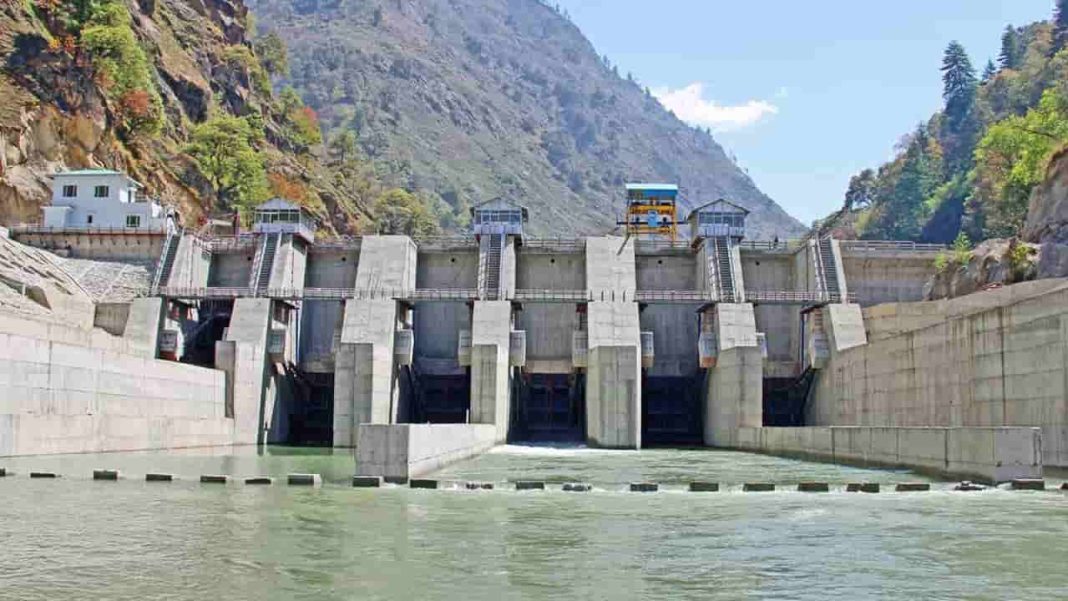In an effort to shore up its depleting finances, the Himachal Pradesh government introduced the Himachal Pradesh Water Cess on Hydropower Generation Bill, 2023, on March 16. This allows it to impose a water cess on hydropower plants to increase revenue. However, this has landed the government in a soup as hydropower plants have challenged the constitutional validity of the Bill in the Himachal Pradesh High Court. A division bench of Justice Tarlok Singh Chauhan and Justice Virender Singh issued a notice to the central and Himachal Pradesh governments and sought their reply.
Mukesh Agnihotri, the Deputy CM of Himachal Pradesh, reportedly, explained the circumstances which necessitated the promulgation of the Bill. He said that Himachal Pradesh was blessed with immense water from five major rivers—Sutlej, Beas, Ravi, Chenab and Yamuna. The water flow throughout the year has been used for generation of hydropower. Further, for proper water conservation and management, the state is spending a huge amount on environment and social impact mitigation. Developmental activities in the vicinity of hydropower projects are increasing the livelihood of people, he added.
However, Himachal Pradesh has very limited revenue generation resources. The main sources are direct taxes, hydropower and the tourism sector. Water from various rivers and tributaries in the state can be a useful source of revenue generation, he said. The neighbouring states/Union Territories—Uttarakhand and J&K—have imposed water cess on hydropower generation almost a decade ago. Similarly, Himachal Pradesh has decided to introduce such a policy. Water cess on hydropower generation will be imposed based on consumption of water and head available in the project. At present, 172 hydropower projects with an installed capacity of 10,991 MW have been commissioned in the state.
In order to compensate the deficit, five times more tariff than existing Uttarakhand rates will lead to an annual revenue of Rs 3,829.15 crore calculated on the basis of actual annual energy generation for the financial year 2021-22, he said. As such, imposing water cess in line with the neighbouring states is the need of the hour, he justified.
Chapter 5 of the Bill reads:
Fixation of water cess
17 (1) The user shall be liable to pay the water cess under the Ordinance at such rates as the government may by notification fix.
(2) The state government may review, increase, decrease or vary the rates of the water cess fixed from time to time in the manner it deems fit.
Recovery of water cess
18. The commission shall recover water cess as per the rates fixed by the state government from every user whenever water is drawn by a user for generation of hydropower.
Procedure for assessment
19 (1) The assessment of water drawn by the user for hydropower generation and computation of water cess thereof, shall be carried out by the commission.
(2) The user shall pay the water cess as assessed under sub-section (1) within such time as may be specified by the commission.
(3) If any user fails to pay water cess due on him, penalty shall be imposed as determined by the commission. The user has to pay water cess along with penalty within extended time as may be specified by the commission. If he again fails to pay water cess along with penalty within the extended time, the dues shall be recovered as arrears of land revenue.
According to the Bill, a cess of 10 paise per cubic metre will be charged on hydroelectric projects with head up to 30 m; 25 paise per cubic metre for 30-60 m; 35 paise per cubic metre for 60-90 m, and 50 paise per cubic metre for above 90 m.
Himachal Pradesh Chief Minister Sukhvinder Singh Sukhu has defended the move to impose water cess. In the state assembly on March 23, Sukhu clarified that the Act neither violates any kind of inter-state treaties nor the provisions of the Indus Water Treaty. He further said that the levy does not affect the release of water to neighbouring states. He asserted that water cess is logical and under the jurisdiction of the state as about 45,000 hectares land of the state was submerged in the reservoirs of three projects of Bhakra Beas Management Board in Himachal and the state had been facing adverse environmental impact for decades. On March 31, the cash-strapped state announced that it will pay subsidy to the state electricity board after the outcry over the cess.
However, the Punjab Vidhan Sabha on March 22 passed a unanimous resolution declaring the Himachal Pradesh government’s move to levy water cess on hydel power projects as illegal and sought its immediate withdrawal. The House recommended that the Punjab government request the Union government to prevail upon Himachal Pradesh to withdraw the move as it was in violation of the Inter-State River Water Disputes Act, 1956.
On the same day, the Haryana Vidhan Sabha (on last day of the Budget session) also unanimously passed a resolution against the Himachal Pradesh government’s decision to levy water cess on hydropower projects. Incidentally, J&K was the first state to levy usage of water for generating electricity in 2010.
To frame a detailed state water policy, as a first step, the Uttarakhand Water Management and Regulatory Act, 2013, was brought into existence. It levied tax (the Uttarakhand Water Tax on Electricity Generation Act, 2012) on hydropower generating companies, who then challenged its constitutional validity. The Uttarakhand High Court on February 2021 upheld the constitutional validity of the 2012 legislation to levy water tax on hydro power projects of more than 5 MW capacity.
The Union government had taken several policy initiatives in the past for hydropower development in the country. These include the National Electricity Policy 2005, National Tariff Policy 2016, National Rehabilitation & Resettlement Policy 2007 and Right to Fair Compensation & Transparency in Land Acquisition, Rehabilitation and Resettlement Act 2013.
—By Shivam Sharma and India Legal Bureau


